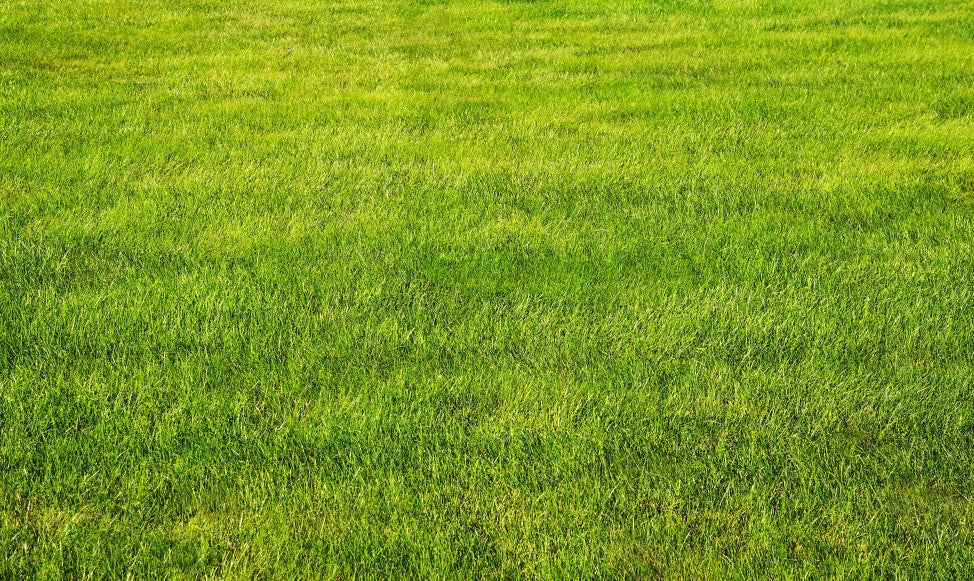There’s more to a great lawn than meets the eye. Clay soil doesn’t have to be complicated - though there are a few cons, there are several benefits to this type of soil. You can’t always pick your land, but you can choose how you care for it. Understanding how to properly care for your clay soil will aid in growing thriving, green grass.
Whether your soil is clay, silt, or sand, we want to help you have the best lawn on the block. By having a deeper understanding of your soil, you can get to the root of any grass issues.
The Dirt on Clay Soil

Just as the name implies, clay soil is a very smooth, moisture-retaining soil when wet. It may seem hard to work with on the surface, but we know how to make lawn care easy, and it all starts with digging a little deeper. Let’s take a step back and learn about the properties of clay soil.
The particles in clay soil are small and fine in texture. These particles are tightly compacted so that air and water move through the dirt slowly. Most clay soils have a high Cation Exchange Capacity (CEC), which means it has a better ability to hold nutrients than other types of soil. Understanding the CEC of your soil will allow you to adjust your lawn care methods, ensuring proper distribution of nutrients.
Clay soil can dry out, although it does retain water very well. Once dried, it becomes very hard and crackled, similar to concrete. It can be a turn-off for some homeowners because of its reputation for being heavy and hard to manage. Fear not, you can restore tough, dried clay soil with proper lawn care. Let’s first understand why lawn health starts in the soil.
Why Soil Health Matters

The health of your soil is vital for healthy, growing grass. This dirt is our first connection with the earth when planting grass seed or laying sod. Soil is the source of nutrients that will provide food and energy for your grass and other plant life.
You don’t have to start with healthy soil to grow great grass. We recommend adding an aerator and fertilizer into your lawn care routine to be well on your way to healthy soil.
All About Aerators
Aeration is the process of creating small punctures in a lawn that allows sunlight, water, and nutrients to penetrate through to the grassroots and soil. Simply put, this technique enables the ground to breathe. Clay soil already holds many nutrients, and using an aerator will only benefit this soil, by allowing more nourishment to seep in at a deeper level. Using an aerator is critical for clay soil health by acting as a conditioner, loosening clay and dirt, and preventing crusting.
There are six main goals of using an aerator, all of which will be beneficial to dry, crusted clay soil:
- Soil penetration
- Enhanced drainage
- Reduce soil compaction
- Improved water infiltration
- Greater air exchange
- Better soil structure
Multiple soil types can reap the benefits of aeration. For clay soil, this is an excellent preventive against compaction and crusting. We recommend adding an aerator treatment as part of your lawn care when working with dried-out and hardened clay soil.
You can use our Liquid Soil Loosener alone or in combination with physical aeration. This aerator treatment acts as a conditioner, allowing moisture to penetrate through to the soil.
No-Fuss Fertilizer
Do you have a goal of having green grass? Don’t let tough soil stop you! An easy step to add to your lawn care routine is fertilization, especially when working with harsh clay soil. Fertilizer is especially beneficial to apply after aerating your lawn, as nutrients can penetrate deeper into the soil/
When it comes to fertilizer, there are many benefits to going liquid:
- Easy to handle
- Uniform application
- Nutrients are well-mixed
- Quick results
- A little goes a long way
Simple Lawn Solutions has several fertilizers focused on grass growth, lawn strength, and root development. There’s no doubt you will find the appropriate fertilizer for your lawn. With the right techniques and products in your lawn care routine, you will find that clay soil is easy to manage.
How Do I Know What Type of Soil I Have?
Many factors play into achieving a luscious lawn. The first step to understanding how to treat your soil is learning about what type of soil you have. There are six main types of soil:
- Clay
- Sand
- Silt
- Loam
- Peat
- Chalk
Check out this guide to determine what type of soil you have.

The type of weeds growing in your lawn can be indicative of your soil type. For clay soil, the presence of horsenettle or pennycress is common. Observing and identifying your weeds is a no-mess way to see what kind of soil you have.
Finding out what type of soil you have is a significant first step to understanding your soil health. You can also conduct a soil test to determine the kind of nutrients that your soil may be lacking.
We Care About Your Lawn Care

Many homeowners struggle with clay soil, but we are here to make things simple. Lawn care doesn’t always have to be hard work. With the right routine and product lineup, you can achieve the lawn of your dreams.
Check out our site to learn more about how you can achieve your greatest, greenest lawn yet.











6 comments
Hello Cesar, thank you for your comment. You may apply the products after a light rain. Applying the products after heavy rain or storm may result in them being washed away by way of storm drains and causing unintended damage to water ecosystems. An overabundance of NPK can cause excess algae and other plant growth within water bodies. If you have any additional questions, feel free to reach us by email!
can I apply after the rain
Hello Paul, thank you for your comment. We would recommend using the soil loosener 1-2 times every 1-2 years.
how long after spraying liquid soil loosener to clay soil do the effects last?
Hello Jim, thank you for your comment. We recommend spraying our liquid soil loosener with the ortho dial n sprayer. Apply with the ortho on the 1 ounce per gallon of water setting. Here is the link to this sprayer. https://www.amazon.com/Ortho-Spray-Multi-Use-Hose-End-Sprayer/dp/B0071D0EZK/ref=pd_ybh_a_1?_encoding=UTF8&psc=1&refRID=77RQ67ES8A5PBAQ4FXK2